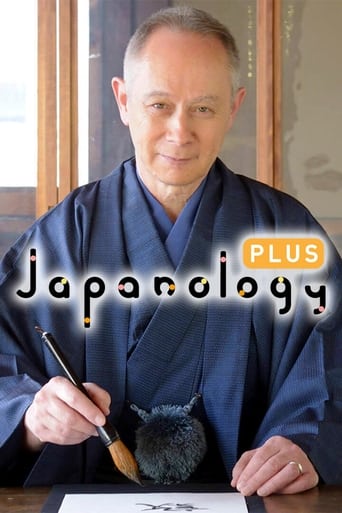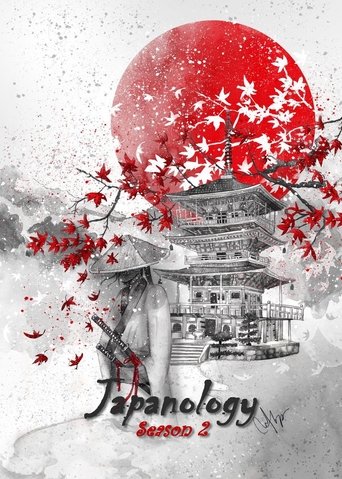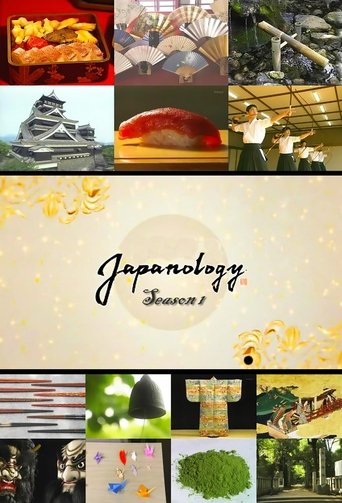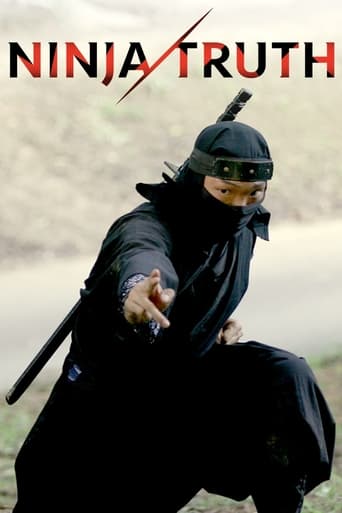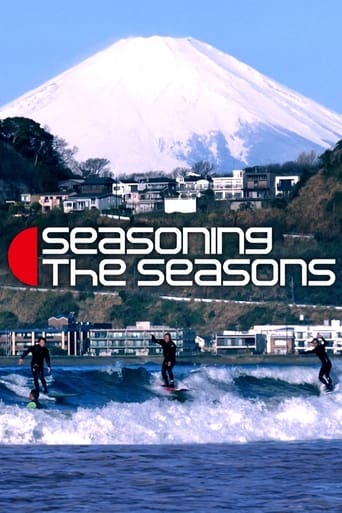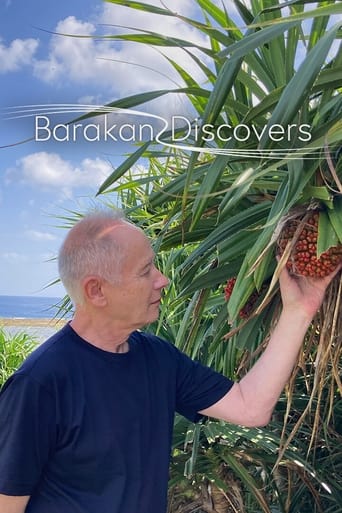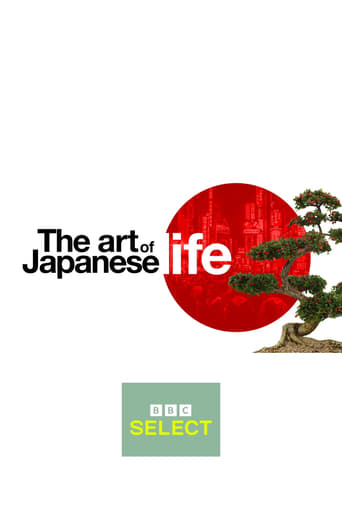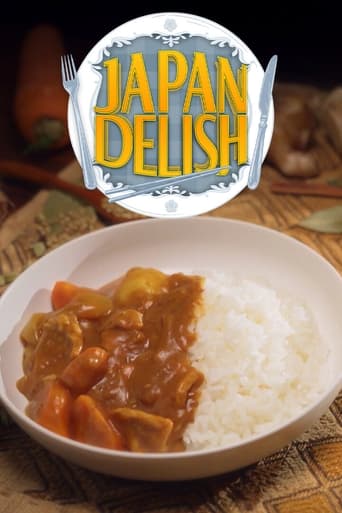Japanology Plus Season 6
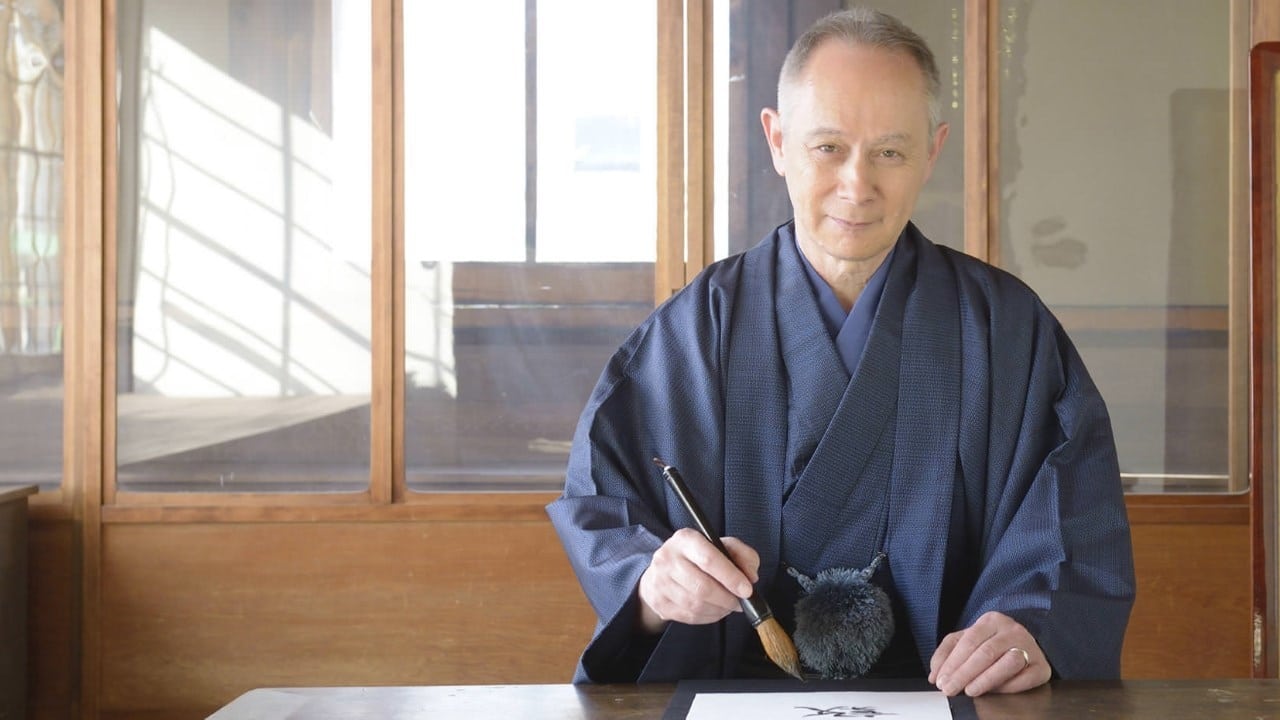
Host Peter Barakan delves into various aspects of Japanese culture; exploring practices, history, and modern innovations in such areas as ramen, rice, sushi, geisha, bonsai, and so much more. Local experts discuss their passions at fascinating length, and American Japanophile Matt Alt experiences the food, practices, and cultures in each episode in depth. Viewers will finish each half hour episode with a new understanding of an area of Japanese life through demonstrative videos and explanations, all delivered respectfully and true to the Japanese way of life.
Watch NowWith 30 Day Free Trial!
Japanology Plus
2014 / NR
Host Peter Barakan delves into various aspects of Japanese culture; exploring practices, history, and modern innovations in such areas as ramen, rice, sushi, geisha, bonsai, and so much more. Local experts discuss their passions at fascinating length, and American Japanophile Matt Alt experiences the food, practices, and cultures in each episode in depth. Viewers will finish each half hour episode with a new understanding of an area of Japanese life through demonstrative videos and explanations, all delivered respectfully and true to the Japanese way of life.
Watch Trailer
With 30 Day Free Trial!
Japanology Plus Season 6 Full Episode Guide
"Donburi" is a bowl of rice with various toppings. It's quick, cheap and tasty, making it one of Japan's favorite comfort foods. A huge number of options range from the classic Katsudon (fried pork and egg) to the extravagant Kaisendon (seafood selection). This time, our theme is "Donburi." Chieko Mukasa, a food journalist, explains how it became so popular. And in Plus One, Matt Alt travels to a region that's boosting tourism through innovative "Donburi" recipes.
Japan shares a close relationship with the insect kingdom. The lifecycles of different bugs mark the changing of the seasons. People of all ages enjoy collecting them in the wild, listening to their sounds and keeping them as pets. This time on Japanology Plus, our theme is insects. Manabu Akaike, a science and technology journalist, explains the origins of the attachment, and how a love of insects has shaped Japanese thinking. In Plus One, Matt Alt hunts wasps in the forest, then tries eating their fresh larvae.
In 1987, Wolfgang Loeger left his native Austria and came to Japan. After nearly 3 decades as a ski instructor, he moved to Tokyo and became a taxi driver. Foreign taxi drivers aren't common in Japan, but Loeger's knowledge and enthusiasm are second to none. In a Japanophiles interview, he tells Peter Barakan how he ended up driving a taxi, and shares some of his experiences so far. He also speaks about his ambition to become a sightseeing taxi driver.
Plasterwork has been an indispensable feature of Japanese architecture for hundreds of years. You can see it on the walls of castles, storehouses, and everyday homes. Using a humble trowel, plasterers create lustrous surfaces and intricate reliefs. This time on Japanology Plus, our theme is plasterwork. Our guest is Takao Kobayashi, a 40-year veteran of the trade. He explains why he finds the work so captivating. And in Plus One, Matt Alt meets young trainees creating innovative twists on the plasterwork tradition.
Japan's paper money incorporates some of the most advanced security features in the world, including pin-sharp watermarks, and microscopic text. This time on Japanology Plus, our theme is banknotes. Researcher Takashi Uemura, a former employee of what is now known as the National Printing Bureau, tells us why cash is still the payment method of choice for most Japanese shoppers. And in Plus One, Matt Alt learns about the elaborate envelopes that are used to gift money on special occasions.
Japanese macaques, a species of monkey unique to Japan, are a common sight in the country's forests and mountains. Much-loved for their expressive faces, these monkeys are sometimes seen as deities. This time on Japanology Plus, our main guest is Hiroyuki Kurita, an Oita City official whose duties include monkey management. He tells us why it's important to maintain a distance between the human and wild animal kingdoms. And in Plus One, Matt Alt learns how a monkey-shaped charm protects homes and neighborhoods.
For years, David Atkinson from the United Kingdom worked in Japan as a respected financial analyst. His career took an unexpected turn when he became the CEO of one of the country's oldest restoration companies. For hundreds of years, this firm has worked on cultural properties across Japan. In a Japanophiles interview with Peter Barakan, Atkinson introduces examples of the painstaking effort involved. He also speaks about Japanese lacquer, and how he has been trying to revive the industry.
In Japan, the bath has a special status. And for Japanese, using one is an essential part of daily life. It's not just a place to wash yourself, but a chance to relax, reflect on your day, or spend time with your family. This time on Japanology Plus, our theme is bathrooms. Our guest is Osamu Oba, a professor at Kyoto Prefectural University. He explains why baths are so important in Japan, and introduces us to the latest innovations. And in Plus One, Matt Alt discovers how bath additives are created.
In Japan, sword fighting is a common feature of period dramas. But Japanese swords, katana, were more than weapons. They were used in rituals, and held as status symbols. Today, they're viewed as works of art. This time on Japanology Plus, our theme is swords. Our main guest is manga artist Kimiko Kamata, author of a katana-themed manga. She explains why the blades have attracted a new audience of young, female fans. And in Plus One, Matt Alt learns how to properly maintain a Japanese sword.
Karakuri-ningyo, or mechanical dolls, can be regarded as traditional robots. Their technology is not just interesting but actually useful even today. This time on Japanology Plus, our theme is mechanical dolls. Our guest is Yoshikazu Suematsu, a visiting professor at the Aichi Institute of Technology who introduces us to the fascinating technology behind these dolls. And in Plus One, Matt Alt learns how to operate festival float dolls with local students who are carrying on the tradition.
Tokyo is an energetic, bustling metropolis. But take a few steps off the main streets, and it reveals a different side to its character. This time on Japanology Plus, we explore the backstreets and alleys of Japan's capital city. Satoshi Okamoto shows us secrets and shortcuts in Ginza. Akiko Shiihara explains how alleys have turned Yanaka into an unexpected tourist hotspot. And Hidekichi Mizuno tells us how he started his alleyway business career -- by selling tangerines on the street.
Tokyo was once known as the "city of water," but many of its rivers and waterways are now hidden from view. This time on Japanology Plus, we look at water in Japan's capital from various angles. Master brewer Shunichi Saito explains how tap water is used to make excellent sake. Tour guide Masahiro Inagaki takes us on a river cruise. And pleasure boat operator Ken Ito explains how land reclamation changed the face of water-based industries in the Tokyo Bay.
Kyogen is a traditional form of Japanese theater. It's comedy, performed on a bare stage with imaginative movements and dialogue. When Ondrej Hybl, from the Czech Republic, first saw a performance at the age of 21, he found it so appealing that he came to Japan to study it. In a Japanophiles interview with Peter Barakan, Hybl explains why he fell in love with Kyogen, and the challenges he faced when learning it. We also meet his teacher, veteran performer Shigeyama Shime.
In Japan, people often wear slippers inside their homes, schools or workplaces. It's a well-known custom, but how did it come about, and how is it evolving in modern Japan? This time on Japanology Plus, our theme is slippers. Our guest is footwear history expert Kunihiro Takechi, who tells us how and why they were invented in Japan. He also introduces some new trends in the slipper industry. And in Plus One, Matt Alt decorates a pair of indoor shoes using a technique called decoupage.
Frozen food exists all over the world, but Japan is at the cutting edge of research and development. Modern products are almost identical to fresh goods both in texture and nutritional value. This time on Japanology Plus, our theme is frozen food. Our guest is university professor Toru Suzuki, who discusses the challenges involved in frozen food research. And in Plus One, Matt Alt tries cooking with frozen ingredients. His teacher is Takashi Nishikawa, a man some call the Freezer King.
Konamon means "flour-based cuisine," but in Osaka Prefecture the word generally refers to 2 specific dishes: takoyaki (bite-sized batter balls with pieces of octopus inside) and Okonomiyaki (savory pancakes made with cabbage). This time on Japanology Plus, our theme is Konamon: flour-based cuisine. Our guest is lifestyle researcher Mana Kumagai, who takes us to outstanding Konamon and Okonomiyaki restaurants. And in Plus One, Matt Alt learns how to make Monjayaki, a Tokyo twist on flour-based food.
After studying English literature and philosophy, Peter MacMillan moved from his native Ireland to Japan to become a university lecturer. He wrote the first full English translation of the Hyakunin Isshu, a collection of classical Japanese poems. In a Japanophiles interview with Peter Barakan, MacMillan explains the intricacies of translating ancient Japanese into English. He talks about the appeal of Japanese poetry, and how he's bringing it to a wider, global audience using games and art.
There are 6 dog breeds native to Japan, including Akita and Shiba Inu. Each has adapted to the region of its origin, but they all have pointy ears, a curved tail, and an unwavering loyalty to their owner. This time on Japanology Plus, our theme is Japanese dog breeds. Our guest is Mitsuaki Ohta, a professor at the Tokyo University of Agriculture. He explains the difference between Western and Japanese breeds. And in Plus One, Matt Alt looks at efforts to increase the number of Akita owners.
Oni -- Japanese ogres -- appear to be halfway between humans and beasts, with animal horns and scowling expressions. They come from ancient folklore, but are a big part of modern Japanese society, both through stories, and seasonal events like Setsubun. Many are feared, but others are respected as deities who can control natural phenomena such as wind and lightning. Our main guest is Kazuhiko Komatsu, a leading folklore researcher. He tells us why Oni are more than just terrifying monsters.
"Taishu engeki," or "popular theater," is a fun and engaging form of entertainment that is intended to appeal to everyone. Typical performances are period dramas, telling stories of samurai and sword-fighting. The shows also feature singing, dancing, and glamorous costumes. Our guests are Ryuji Sawa and Daigoro Tachibana, both leaders of theater troupes. Sawa is a veteran with 8 decades of experience, while Tachibana has made a name for himself as a performer of female roles.
Japan offers a huge variety of meat dishes, including sumptuous wagyu beef and casual chicken skewers. But these highlights of Japanese cuisine are recent developments; meat consumption was actually banned in Japan for 1,200 years. This time on Japanology Plus, our theme is meat. Our main guest, Professor Nobuo Harada of Kokushikan University, explains the history behind meat-eating in Japan. And in Plus One, Matt Alt discovers how livestock farmers achieve such wonderfully marbled beef.
When Oussouby Sacko, from the Republic of Mali in western Africa, arrived in Japan, he knew very little about the language or culture. Nearly three decades later, in April 2018, he was appointed the president of Kyoto Seika University. This time on Japanophiles, Sacko explains to Peter Barakan why he came to Japan, how he became the first African president of a Japanese university, and what his ambitions are for the students he leads.
70% of Japan is covered in forests. The Japanese have been using wood as a building material for hundreds of years, and the nation is home to the world's oldest wooden structures. Their longevity is a testament to the skill of the people who built them. In the second of two editions focusing on wood, Japanology Plus introduces the tools and techniques used by Japanese carpenters. Our guests are Kenzo Akao, director of the Takenaka Carpentry Tools Museum, and Akinori Abo, a professional carpenter.
70% of Japan's land is covered in forests and woodland. For centuries, wood has been used for furniture, buildings, and tools. This time on Japanology Plus, our theme is the cultural significance of wood. Our main guest, architecture expert Kazuyoshi Fumoto, explains why wood continues to be a mainstay of modern Japanese life and why people feel so warmly towards it. And in Plus One, Matt Alt discovers the level of precision that Japanese carpenters are able to achieve.
Between the 17th and 19th centuries, Christianity was banned in Japan. During the ban, believers faced unimaginable persecution. Some, however, held onto their faith and devised ways to worship in secret, often in remote locations such as Nagasaki’s Goto islands.
When the West first established trade relations with Japan, one of its major exports, alongside goods, was religion. Brought in by foreign missionaries, Christianity began to catch on—especially around Nagasaki, the port that became Japan’s key link with the Western world. Fearing Christianity’s expanding influence, Japan’s rulers banned the religion and persecuted its followers—but rather than abandon their faith, many of Japan’s Christians went underground, practicing in secret for around 250 years.
Thomas Bertrand, from France, is the proprietor of a bento box shop in Kyoto. Bertrand's shop stocks hundreds of designs, in both traditional and modern styles. He ships products to customers around the world and also runs bento photo competitions online. This time, in a Japanophiles profile, Bertrand tells us why he finds bento boxes so appealing and shows us how he's bringing this part of Japanese food culture to a global audience. We also meet the shop's staff and see what they're eating for lunch!
If there's one thing that makes Japanese homes immediately identifiable, it's their roofs, or to be more specific, the tiles that make up those roofs. These intricate tiles, which have been part of the Japanese landscape for well over a millennium, are the handiwork of roof tilers, who share the same passion for their craft as generations of tilers before them. On this edition of Japanology Plus, we take a look at the long history of Japan's roof tiles and meet the people dedicated to keeping the tradition alive.
Free Trial Channels
Seasons


